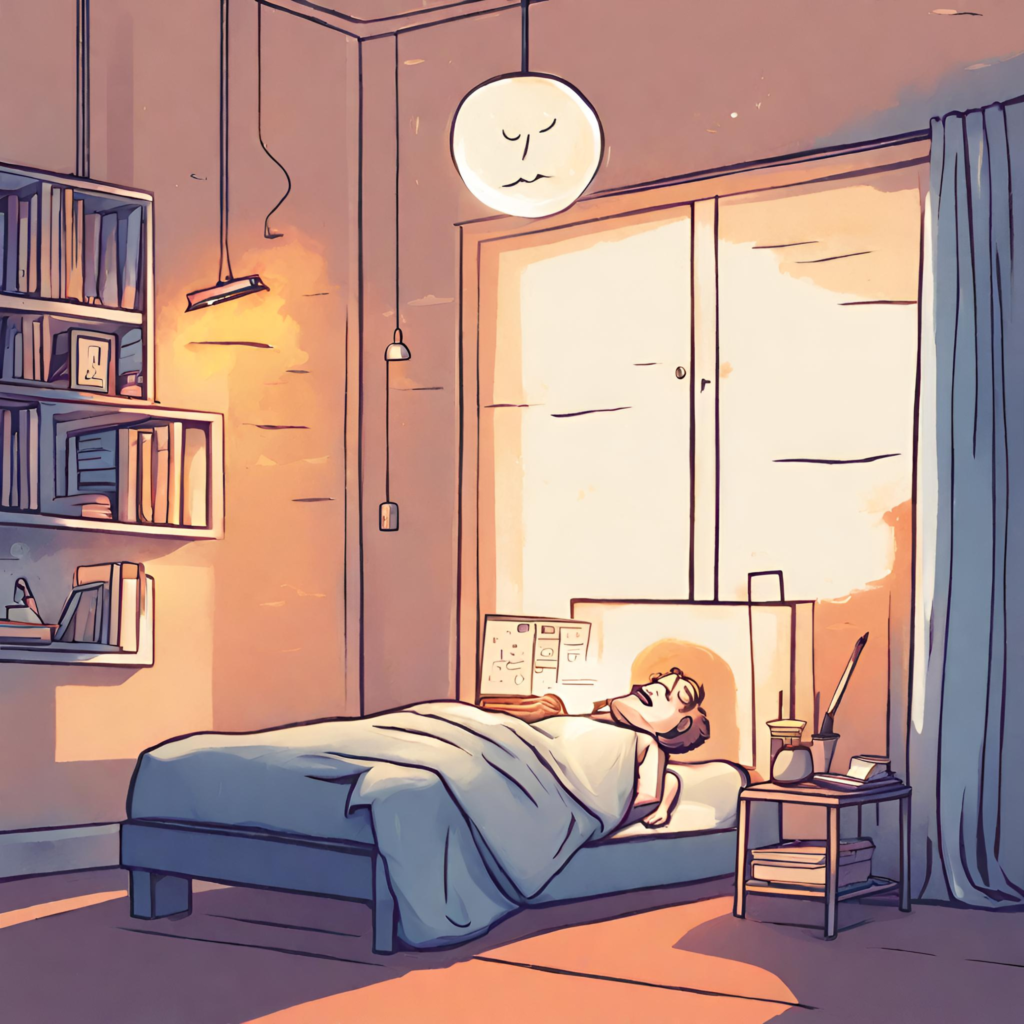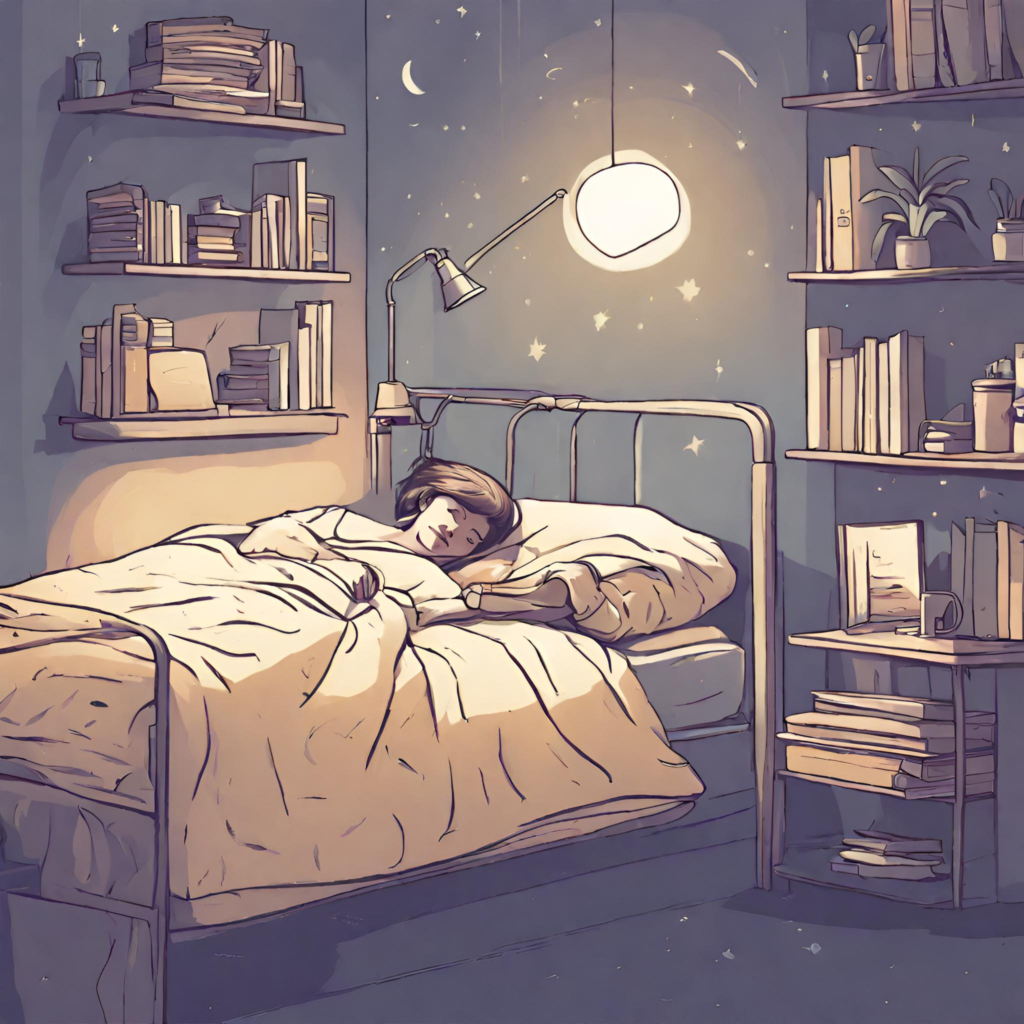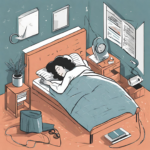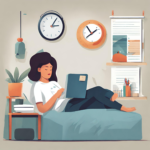In the realm of rest and rejuvenation, the influence of light on napping is a topic of paramount importance. Light, both natural and artificial, plays a crucial role in regulating our sleep-wake cycle, impacting the quality and effectiveness of our naps. As we delve into the intricate relationship between light and napping, it’s essential to discern the nuances between natural and artificial lighting and how they can be harnessed to enhance our napping experience. This comprehensive guide will explore the science behind light’s impact on sleep, the contrasting effects of natural and artificial light, and practical tips for optimizing light exposure to improve nap quality through the process of balancing light for effective napping.
The Science of Light and Sleep for Better Napping
Light is a powerful external cue that influences our circadian rhythms – the internal biological clock that regulates the sleep-wake cycle, hormone production, and other bodily functions. Exposure to light, particularly blue light, has a profound effect on the production of melatonin, the hormone responsible for inducing sleepiness. Understanding this interplay is essential for mastering the art of balancing light for effective napping.
Melatonin and Circadian Rhythms: Key to Effective Napping
Melatonin production increases in the absence of light, signaling to our bodies that it’s time to wind down and prepare for sleep. Conversely, exposure to light, especially in the blue spectrum, suppresses melatonin production, promoting alertness and wakefulness. This biological response underscores the importance of managing light exposure to facilitate better napping, emphasizing the need for balancing natural and artificial lighting for optimal napping results.
Natural Light and Its Role in Napping
Natural light, emanating from the sun, is the most potent regulator of our circadian rhythms. Its dynamic nature, with variations in intensity and spectrum throughout the day, naturally aligns with our body’s sleep-wake cycle. Harnessing natural light effectively is a critical aspect of balancing light for effective napping.

Benefits of Natural Light for Napping
- Alignment with Circadian Rhythms: Natural light exposure during the day helps reinforce our internal clock, making it easier to fall asleep during nap times. This aligns with the concept of balancing light for better napping habits.
- Improved Sleep Quality: Exposure to natural light during the day has been linked to improved sleep quality and duration, both at night and during naps.
- Enhanced Mood: Sunlight triggers the release of serotonin, a neurotransmitter that boosts mood and helps maintain a regular sleep cycle.
Artificial Light and Its Implications on Napping
Artificial lighting, from sources like LED bulbs and electronic screens, predominantly emits blue light. This type of light has a significant impact on our ability to nap effectively, presenting challenges in balancing artificial light for optimal nap quality.
Disruptive Effects of Artificial Light on Napping
- Suppression of Melatonin: Artificial light, particularly blue light, can inhibit melatonin production, making it challenging to fall asleep during nap times. Recognizing this is crucial for balancing light exposure for improved napping.
- Irregular Sleep Patterns: Prolonged exposure to artificial light can lead to irregular sleep patterns and sleep disturbances, affecting both nighttime sleep and napping. This further highlights the importance of managing light sources for better napping experiences.
Balancing Natural and Artificial Light for Optimal Napping
Understanding the effects of natural and artificial light can help us create the perfect environment for napping. Here are some strategies for balancing light exposure for effective napping:
Maximize Natural Light Exposure for Enhanced Napping
- Morning Sunlight: Start your day with exposure to natural sunlight to help reset your circadian rhythm and improve alertness. This practice is a key aspect of balancing light in favor of natural sources for optimal napping.
- Daytime Naps: If possible, nap in a space with ample natural light or take a brief walk outside before napping to align your body’s sleep-wake cycle, thus optimizing light balance for effective napping.
Manage Artificial Light
- Limit Screen Time: Reduce exposure to electronic devices emitting blue light before napping. If necessary, use blue light filters or glasses to mitigate the impact of artificial light, an essential step in balancing light for effective.
- Dim Artificial Lighting: Lower the intensity of artificial lights in your napping environment to create a restful ambiance, an important factor in creating a balanced light environment for napping.
Embrace Darkness for Optimal Napping
- Use Blackout Curtains: Create a dark environment that encourages the production of melatonin, facilitating easier onset of sleep during naps. This strategy is vital for balancing light effectively to enhance nap quality.
- Eye Masks: An eye mask can be a portable solution for blocking out light and creating a conducive napping environment, especially when traveling, helping in maintaining a balanced light setting for naps.

Practical Tips for Napping with Light in Mind
- Timing Matters: Align your nap times with natural light patterns. Early afternoon naps, when sunlight is abundant, can be particularly refreshing and are part of strategically balancing light for effective napping.
- Create a Balanced Environment: If natural light is limited, use soft, warm artificial lighting to simulate a sunset-like environment that encourages relaxation, a technique for balancing artificial and natural light for optimal napping.
- Mindful Transition: Gradually dim the lights as you prepare for your nap, mimicking the natural transition from daylight to dusk, which is key to balancing light exposure for effective napping.
The Future of Light and Napping: Innovations and Trends
Advancements in lighting technology and sleep research are paving the way for innovative solutions to enhance our napping experience:
- Smart Lighting Systems: Programmable lighting that adjusts intensity and color temperature based on the time of day can help optimize light exposure for napping, an example of technological advancement in balancing light for napping.
- Light-Based Sleep Aids: Devices that emit specific light wavelengths to promote relaxation and sleep onset are becoming more prevalent, offering new avenues for improving nap quality through balanced light exposure.
Conclusion: Balancing Light for Effective Napping
The interplay between light and napping is a critical factor in achieving restorative rest. By harnessing the benefits of natural light and mitigating the disruptive effects of artificial light, we can create optimal conditions for napping. Whether through embracing the sun’s rays, managing screen time, or creating a dark sanctuary for rest, understanding the role of light in napping is key to unlocking its full potential. As we navigate the landscape of light and sleep, let’s illuminate our path to better naps, enhanced well-being, and a more harmonious sleep-wake cycle. With these insights and strategies, we can shine a light on the art of napping, ensuring that each restful interlude is as rejuvenating as it is restorative, all through the lens of balancing light for effective napping.


